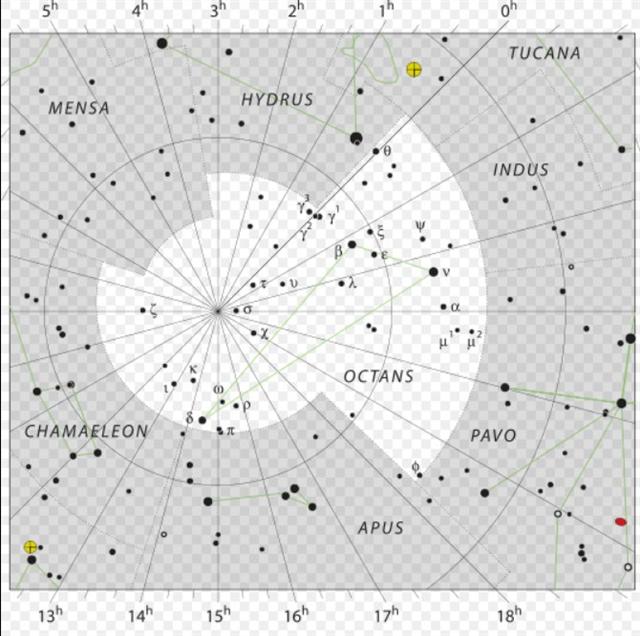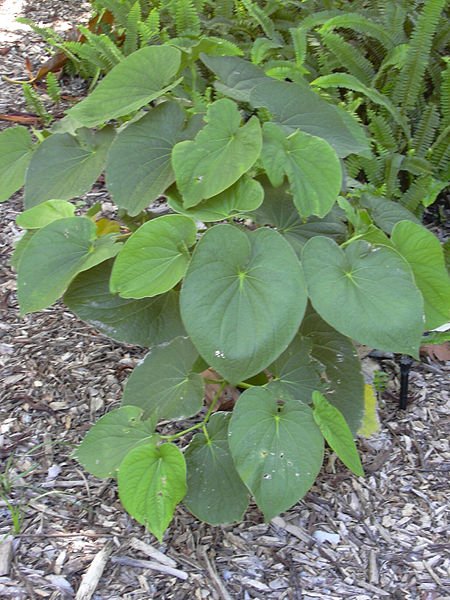170. The 5th and last pair of
niu glyphs came 36 days after
Cb12-18:
 |
 |
 |
 |
|
Ca2-24 |
Ca2-25 |
Ca6-11 |
Ca12-21 |
 |
 |
 |
 |
|
Ca12-25 |
Ca12-26 |
Ca13-14 |
Ca13-15 |
 |
 |
 |
|
Cb1-15 |
Cb2-8 |
Cb2-9 |
 |
 |
 |
|
Cb12-18 |
Cb13-29 |
Cb13-30 |
 |
 |
 |
 |
 |
 |
|
Cb12-15 |
(290 = 348 - 58) |
(392 + 291 = 683) |
(260 + 424) |
Cb12-19 |
Cb12-20 |
|
tagata kua
here te maro i te puoko |
e ariki kua
iri |
te vage Rei |
tu te niu |
te hokohuki ki
te tapamea |
te hokohuki |
|
INVISIBLY CLOSE TO THE SUN NORTH
OF THE EQUATOR: |
|
γ Pyxidis (133.6) |
ζ Hydrae (134.1), ρ Cancri
(134.2), ζ Oct. (134.3), ο
Cancri (134.6), δ Pyxidis
(134.9) |
ACUBENS
= α Cancri,
TALITHA
BOREALIS = ι Ursae Majoris
(135.0), σ Cancri (135.2), ρ
Ursa Majoris (135.6) |
ν Cancri (136.0),
TALITHA AUSTRALIS
= κ Ursae Majoris
(136.1), ω Hydrae (136.8) |
9h (137.0)
σ¹ Ursa Majoris (137.0), κ
Cancri (137.3), τ Cancri
(137.4),
ALSUHAIL AL WAZN
(of the weight) = λ Velorum
(137.5), σ² Ursa Majoris
(137.6), τ Ursa Majoris (137.7),
ξ Cancri (137.8) |
κ Pyxidis (138.0), ε Pyxidis
(138.5) |
|
Aug 1 |
2 |
3 |
4 (216 = 132 + 84) |
5 |
6 |
|
ºJuly 28 |
29 (*130) |
30 |
31 |
ºAug 1 |
2 (214) |
|
'July 5 |
6 (*107) |
7 |
8 (3 * 63) |
9 (190) |
10 |
|
SOLSTICE |
"June 22 (*93) |
23 |
ST JOHN'S DAY |
25 |
26 (177 = 354 / 2) |
|
MAY 29 |
30 |
31 |
JUNE 1 (84 + 68) |
2 |
3
(154 = 11 * 14) |
|
129 |
130 |
131 = 135 - 4 |
132 = 84 + 48 |
133 |
134 |
 |
|
CLOSE TO THE FULL MOON
ON EASTER ISLAND: |
|
μ
Aquarii (316.0) |
ε
Equulei (317.8) |
no star listed (318) |
21h (319.6)
ARMUS = η Capricorni
(319.0),
DORSUM
= θ Capricorni
(319.3),
TSOO
= 24 Capricorni
(319.7) |
DRAMASA
= σ Oct.,
χ
Capricorni (320.0), ν Aquarii
(320.3), γ Equulei (320.6), ο
Pavonis (320.8) |
α Oct.
(321.5), δ Equulei (321.7), φ
Capricorni (321.8) |
|
Jan 31 |
Febr 1 |
2 (398 = 84 + 314) |
3 |
4 (400) |
5 (36) |
|
ºJan 27 |
28 |
(*314 = *254 + 60) |
30 |
31 |
ºFebr 1 |
|
'Jan 4 |
5 (*290) |
6 |
7 (372 = 12 * 31) |
8 |
9 |
|
SOLSTICE |
"Dec 22 |
23 |
CHRISTMAS EVE |
25 |
26 (360) |
|
NOV 28 |
29 |
30 (*254) |
DEC 1 |
(336 = 400 - 64) |
3 |
|
312 |
313 |
314 = *254 + 60 |
315 |
316 = 336 - 20 |
317 |
 |
|
30 |
 |
 |
 |
 |
 |
|
Cb13-26 (325) |
Cb13-27 |
Cb13-28 (327) |
(684 + 36 = 720 = 3 * 240) |
Cb13-30 (392 + 329) |
|
ku tutu te
inoino |
te hau tea |
hokohuki ki te
niu |
te tamaiti |
|
INVISIBLY CLOSE TO THE SUN NORTH
OF THE EQUATOR: |
|
Al Zubrah-9
(Lion's Mane) /
Purva Phalguni-11
ZOSMA
(Girdle) = δ Leonis
(169.2),
COXA
(Hips) = θ Leonis
(169.4) |
φ Leonis (170.0),
ALULA
(First Spring of the Gazelle) =
ξ, ν Ursae Majoris
(170.5),
LABRUM = δ Crateris
(170.6) |
σ Leonis (171.1), λ Crateris
(171.6), ι Leonis, ε Crateris
(171.9) |
γ Crateris, π Centauri (172.0),
κ Crateris (172.5), τ Leonis
(172.8)
GREDI (α Capricorni) |
ο¹ Centauri (173.8) |
|
JULY 4 (185) |
5 |
6 (*107 = 472 - 365) |
7 |
8 |
|
CLOSE TO THE FULL MOON
ON EASTER ISLAND: |
|
φ Aquarii
(352.0),
ψ Aquarii
(352.4),
χ Aquarii
(352.6), γ Tucanae, φ Gruis
(352.8) |
CROSS-BARS |
ο
Gruis,
Snowball Nebula = NGC7662
Andromedae
(355.0), τ Oct. (355.3) |
no star listed (356) |
|
ο
Cephei (353.3),
KERB
(Bucket Rope) = τ Pegasi
(353.6) |
κ
Piscium (354.2), θ Piscium
(354.4), υ Pegasi (354.9) |
|
JAN 3 (368 = 4 * 92) |
4 |
5 (*290) |
6 |
7 |
I.e. this was half a year
after the place of ashes (te kihikihi)
and 3 quarters of a year after
the overturned fire altar:
The Child (te tamaiti) at
Cb13-30 could be the result of a kava ceremony 3
quarters earlier (at the
beginning of the gestation
period).
|
Kava will make
the eyes more sensitive,
generating an illusion
of returning light.
Possibly the kava
glyph type sometimes
illustrates a bolt of
lightning. At other
times the glyph type may
depict a ginger root.
The kava glyph
type seems to have been
used in the
rongorongo calendars
to mark where the new
fire is generated. |
... Traditionally, remark, the
kava root was chewed to make the
infusion: The sacrificed child of
the people is cannibalized by the
young chiefs. The water of the
kava, however, has a different
symbolic provenance. The classic
Cakaudrove kava chant,
performed at the Lau
installation rites, refers to it as
sacred rain water from the heavens
... This male and chiefly water
(semen) in the womb of a kava
bowl whose feet are called 'breasts'
(sucu), and from the front of
which, tied to the upper part of an
inverted triangle, a sacred cord
stretches out toward the chief ...
The cord is decorated with small
white cowries, not only a sign of
chieftainship but by name, buli
leka, a continuation of the
metaphor of birth - buli, 'to
form', refers in Fijian procreation
theory to the conceptual acception
of the male in the body of the
woman. The sacrificed child of the
people will thus give birth to the
chief. But only after the chief,
ferocious outside cannibal who
consumes the cannibalized victim,
has himself been sacrificed by it.
For when the ruler drinks the sacred
offering, he is in the state of
intoxication Fijians call 'dead
from' (mateni) or 'dead from
kava' (mate ni yaqona),
to recover from which is explicitly
'to live' (bula). This
accounts for the second cup the
chief is alone accorded, the cup of
fresh water. The god is immediately
revived, brought again to life - in
a transformed state
...
.jpg)
In Cb13-30 an element of vaha mea
evidently explains this was
where rebirth would occur:
From this point (in day
189 + 64 = 253 = September 10) only 19
(= 348 - 329) days / glyphs remained to
the end of the text:
 |
 |
|
Cb14-1 (722) |
Cb14-2 (331) |
|
Kua pu ia |
tagata ariga
erua |
 |
 |
 |
 |
|
Cb14-3 |
Cb14-4 |
Cb14-5 (726) |
Cb14-6 (335) |
|
te marama |
te ika |
kua puo te
pouo - vai o maú hia |
manu noi |
 |
 |
 |
 |
|
Cb14-7 |
Cb14-8 |
Cb14-9 (730) |
Cb14-10 (339) |
|
ku hakarava |
kotia hia |
kua haro te
rima |
te marama |
 |
 |
 |
|
Cb14-11 (732) |
Cb14-12 |
Cb14-13 (342) |
|
ku kikiu |
tagata |
kua to i
te heke |
 |
 |
 |
|
Cb14-14 |
Cb14-15 (736) |
Cb14-16 (345) |
|
tagata tui
i tona ika |
manu puoko
erua |
te manu - e
noi koe te manu |
|














.jpg)















